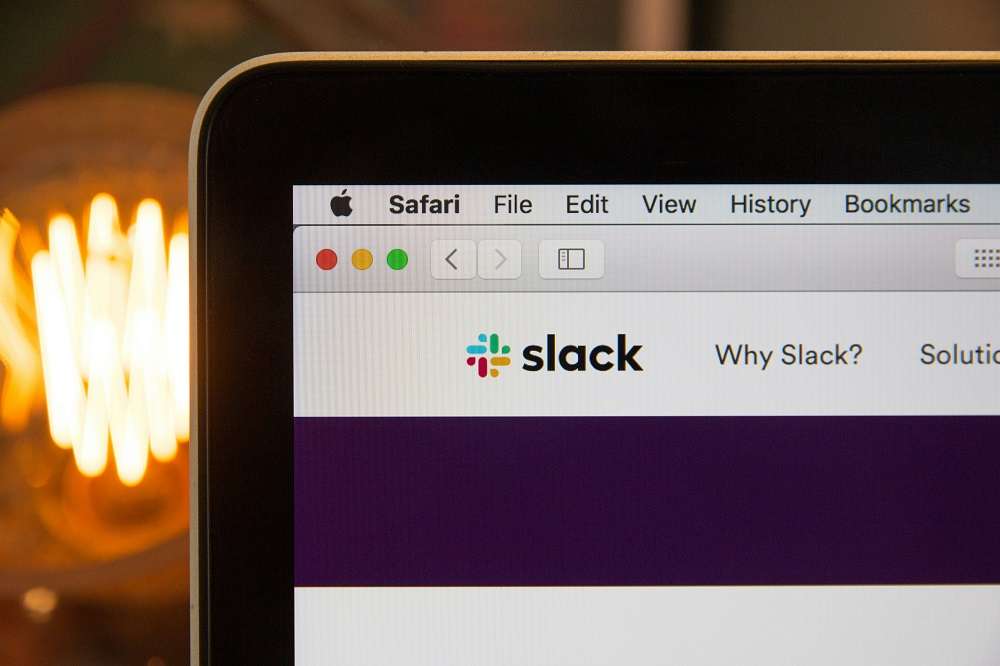- 28 February 2024
- No Comment
- 828
Journey of Slack: An Influential Business Communication App

The world of instant messaging (IM) has come a long way when chatting on platforms like Yahoo! Messenger, AOL, and MSN, was super cool, mostly for personal use.
We also saw the emergence of business-focused IM apps like Salesforce Chatter and Skype for Business with added features like team chats and video calls, catering to the professional side of things.
Enter Slack, introduced around the same time, but little did anyone realize its future significance in the business communication landscape.
Slack brought a game-changer, and transformed the way we work, marking a significant evolution in business communications. Now, let’s delve deeper into this transformation.
History
In 2012, Stewart Butterfield faced a setback with the failure of his game, Glitch. Instead of giving up, he turned things around. He saw potential in an internal tool created for Tiny Speck, the company behind Glitch.
This tool became Slack, short for “Searchable Log of All Communication and Knowledge.” After beta testing in 2013, Slack officially launched to the public in February 2014.
Stewart’s background in making tasks enjoyable from his MMORPG (massively multiplayer online role-playing game) experience played a key role. Fast forward a decade, and Slack became the fastest-growing enterprise software, thanks to its innovative approach and Butterfield’s unique insights. Let’s dive into the intriguing journey that led to Slack’s remarkable success.
In January 2015, just under a year after going public, Slack quickly soared to 500,000 daily active users. But the momentum didn’t stop there – within four months, the count doubled, reaching 1.7 million users by October 2015.
Recognizing its success, Slack started enhancing features. In March 2016, voice calls were introduced, followed by video calling in December 2016, allowing paid users to video conference with up to 15 participants.
Before the video calling launch, in November 2016, Slack wrote an open letter to Microsoft in the New York Times, asserting its position with a bold statement:
“Slack is here to stay.”
This set the stage for a healthy competition between Slack and Microsoft Teams.
Slack introduced threaded messaging in January 2017, a valuable feature that attracted both small and large businesses. By April 2017, Slack had 8 million daily active users and secured $200 million in funding, valuing the company at $3.8 billion.
Just five months later, in September 2017, another funding round led by Softbank brought in $250 million, catapulting Slack’s valuation to $5 billion. Recognizing the need for a CFO, the company appointed Allen Shim in February 2018, signaling a move toward an eventual IPO. The question remained: when would Slack take the next big step?
Listing on The New York Stock Exchange (NYSE)
As of 2018, the competition in the messaging app arena was intense, especially for enterprise use. Digital workplaces were becoming a reality, and major players like Microsoft, Cisco, Google, and Facebook (Meta) were vying for dominance.
To stay ahead, Slack made strategic moves. In July 2018, they acquired HipChat and Stride from Atlassian. Later, in September 2018, Astro, an email app with smart channel functionality, joined the Slack family. These acquisitions set the stage for the successful launch of Slack shared channels in September 2019.
Around the same time, key integrations with Gmail and Microsoft Office 365 were implemented, positioning Slack as a comprehensive workspace.
In June 2019, with its user base growing rapidly, Slack achieved a major milestone by going public through a direct listing on the New York Stock Exchange (NYSE). This move propelled the company’s market value to an impressive $19.5 billion.
As of February 2024, Slack’s market cap is $26.51 billion, making it the 713th most valuable worldwide.
Over 750,000 businesses use it daily for messaging, file sharing, and calls, with 77% of Fortune 100 companies onboard.
With 54.1 million monthly users, Slack aims for 65 million by 2024.
It earns mainly from subscriptions, costing up to $15/month per person.
Offering a free version, Slack captures an 18% market share in business communications software.

Integrating With Other Business Apps
As Slack solidified its position as a go-to enterprise communication tool, the importance of integrating with other business apps became evident to users, partners, and staff. Recognizing this, Slack’s app marketplace now boasts over 2,300 integrations, forming a vital part of the Slack ecosystem.
The Slack API empowers third parties to develop their workflows, apps, and middleware, enhancing the user experience. Even before the direct listing, Mio had launched message interoperability, connecting Slack to Microsoft Teams.
As Webex Teams entered the enterprise messaging landscape, interoperability between Slack and Webex became essential. Despite some companies favoring a single platform, Slack found pockets of users, especially among programmers who appreciated its UI.
In-house adoption surged, with 63% of companies using Microsoft apps incorporating Slack in certain departments. Beyond messaging, external calling gained significance in the Slack experience. While Slack lacks its calling platform, it integrated with popular communication platforms to meet user demands.
$27.7 billion Acquisition
In 2019, Slack allowed Zoom Phone subscribers to make calls to phone numbers. In April 2020, a similar integration was introduced for Microsoft Teams. Two months later, Slack unveiled Slack Connect, facilitating messaging and file sharing with up to 20 external organizations per channel.
In June 2021, riding the wave of audio drop-in app Clubhouse’s success, Slack introduced Slack Huddles, enabling users to engage in unscheduled audio discussions within their workspace.
July 2021 marked a significant milestone in Slack’s journey when Salesforce acquired it for a whopping $27.7 billion. The move signaled Salesforce’s recognition of Slack’s potential in reshaping the modern workplace.
Bret Taylor, Salesforce’s President and Chief Operating Officer, emphasized the evolving nature of the workplace, stating,
“We’ve learned over the past year that the workplace isn’t snapping back to the way it was.”
Post-acquisition, the expected bedding period unfolded, involving consolidation and upselling to existing customers. In June 2022, Mio introduced chat interoperability for Slack and Zoom Team Chat, enabling users to seamlessly connect across platforms.
However, by December 2022, a notable shift occurred as Stewart Butterfield, the founder of Slack, left the company. The reins were passed to Lidiane Jones, a former Microsoft executive. Whether a sign of strategic changes or a mere coincidence, this leadership transition marked a new chapter in Slack’s evolution.
Become An Influential Business Communication Tool
Slack entered the business communication scene after Webex and Zoom, and a few years before Microsoft Teams. Despite the timing, Slack swiftly outpaced competitors, leading in rapid growth, low churn, and a superb user interface.
Over the past decade, it’s been Slack’s sleek design, customizable workflows, and extensive integrations that have set a high bar for innovation, pushing competitors to keep up.
Stewart Butterfield’s design expertise was complemented by hiring MetaLab to refine the interface. MetaLab’s unique approach, drawing inspiration from video games with vibrant colors and a friendly design, set Slack apart in a market saturated with muted blues and grays.
Andrew Wilkinson, Founder of MetaLab, explained the strategy:
“Most enterprise software looks like a cheap 70’s prom suit… so, starting with the logo, we made Slack look like a confetti cannon had gone off.”
This bold design choice became iconic and made Slack instantly recognizable. The impact extended beyond aesthetics; it posed a challenge to other communication solutions to match Slack’s exceptional user experience and feature set.
Competitors like Microsoft Teams and Workplace by Meta took notice and implemented features inspired by Slack. For instance, Teams Connect on Microsoft Teams mirrors Slack’s shared channels, showcasing the industry’s response to Slack’s continuous innovation.
The trend persists: when Slack introduces a feature, the competition pays attention, a testament to its influence on shaping the landscape of modern business communication.
What Sets Slack Apart?
The success of Slack can be significantly attributed to its commitment to integration and interoperability with various business solutions, a crucial aspect in the modern enterprise landscape.
Since its inception, Slack has consistently expanded its integrations library, incorporating popular business apps widely used across industries. Among its top integrations are native connections with global giants like Google Drive, Trello, and Zapier.
What sets Slack apart is its willingness to integrate even with what might be considered competitors by traditional standards. Whether through native integrations or via middleware, Slack has made it exceptionally easy to connect with other apps.
An interesting move by Slack has been opening up its API to facilitate integration with Microsoft Teams Calling, Webex Meetings, and Zoom Meetings and Phone. This strategic decision reflects an awareness that collaboration in the modern workplace often involves multiple tools, and Slack aims to be part of that ecosystem.
From day one, Slack understood the significance of integrations, recognizing that seamless connectivity with various apps is a key factor in winning deals and gaining user loyalty.
As for the future of Slack, only time will reveal the full extent. However, one thing remains certain – integration will continue to be at the heart of Slack’s strategy, ensuring it remains a pivotal player in the evolving landscape of workplace communication.

